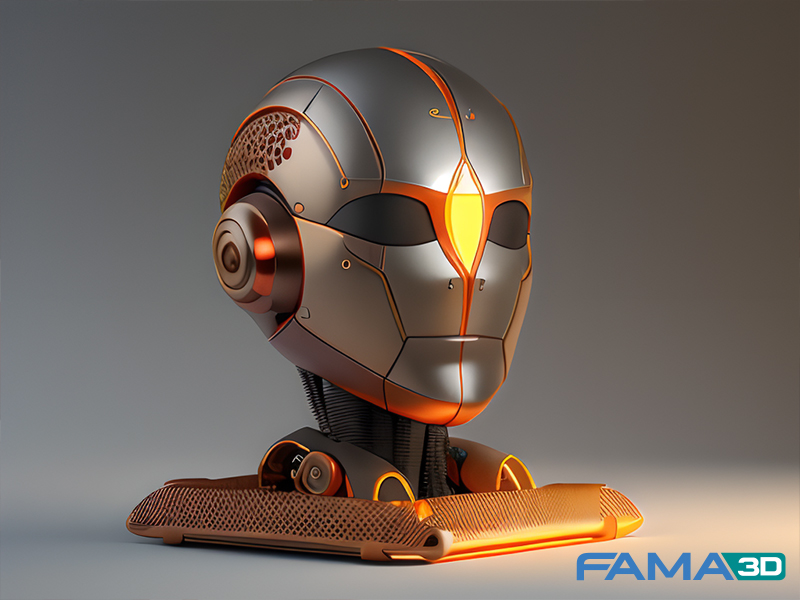3D Printing and Robotics: How to create customised parts for robots and automatons
Nowadays, when combined with 3D printing, automation technology, and robotics, they can bring about a whole series of improvements in production and manufacturing, leading to a real revolution in manufacturing.
As a result, companies can be more efficient and produce complex components quickly and at ever-lower costs. All this is highly flexible; as parts can be designed and then printed in any shape or size, the 3D printing service provides maximum customisation. In this way, fully intercepting customer requirements is more manageable to pursue.
Customised parts for automatons and robots: creating them is possible with 3D printing
An excellent 3D printing service is a valuable solution for creating customised parts for automatons and robots. It is not yet a mass topic, but requesting it from specialists in the field will enable the acquisition of competitive advantage in the coming years.
Industry professionals know that 3D modelling software is required in the design phase to create customised parts for robots and automation. SketchUp and Autodesk Fusion are certainly the most comprehensive on this subject. After the 3D model has been completed, it is time to prepare the file for 3D printing. The formats compatible with the 3D printer are OBJ and STL.
Next comes the selection of the print material which is suitable for your needs: PETG (glycol polyethylene terephthalate), ABS (acrylonitrile butadiene styrene) and especially PLA (polylactic acid) are some of the most popular options to date. Once we have ascertained the compatibility of the 3D printer with the selected material, we move on to the actual printing process. The model file must be uploaded, and the printing parameters (filling density, speed and temperature) must be carefully configured, considering the chosen material. Finally, once the printing is complete, attention must be paid to the post-processing phase. Various finishing operations are required, such as removing the print media, sanding certain rough surfaces or varnishing. In this way, the created product will have the desired appearance.
The testing and assembly phase should also never be underestimated. This phase ensures that what is printed perfectly aligns with one’s intentions. If appropriate, the original model can be subjected to further revisions. Repeating the printing process time after time will prove to be even better.
Faster prototyping
They integrate robotics, automation technology, and 3D printing, resulting in faster prototyping. Why? Prototypes are produced in significantly shorter times than the average. This results in lower costs related to traditional prototyping methodologies, which is very convenient for companies that want to develop new products quickly.
The impact of a 3D printing service in robotics
With an excellent 3D printing service, manufacturing companies are more efficient, and there is a considerable cost cut in the manufacturing sector because production is faster and more accurate. In addition, waste is reduced, and the quality level of the products on the market increases.
Faster production cycles, top-level process efficiency, reduced labour costs, and more workplace safety are the hallmarks of this integration. Over time, this integration will reduce the need for labour and significantly reduce the risk of accidents, most often due to personnel errors (the human component). All this will result in fewer accidents at work and more excellent safety in performing routine activities.
Development of new production methods and state-of-the-art materials?
The 3D printing service has all the prerequisites to offer a competitive advantage to the companies using it. Thanks to robotics and automation, innovative products made from materials that have never been seen before and are impossible to obtain with traditional methods should be fostered.
The strategic role of software
Suppose manufacturers will bring ever-better products to market in terms of quality and artistry. In that case, much of the credit will go to integrating 3D printing with robotics and automation: increasingly sophisticated software will play an even more strategic role. Moreover, as they do not require supervision and act automatically, they will minimise specific manual work and monitoring, freeing up time. Companies will thus be able to allocate personnel to increasingly strategic tasks.
The multiple challenges of integrating 3D printing, robotics and automation
Ultimately, these emerging technologies will benefit the entire industrial sector, as they are already revolutionising production. However, integration work will be crucial, especially in the long term.
Increasing investment will be unavoidable: an excellent 3D printing service requires state-of-the-art software and sophisticated machinery. The latter have high purchase and maintenance costs because they need qualified and appropriately trained personnel.
Another challenging objective will be programming robots to interact better with 3D printers: more excellent compatibility in this respect, made possible by increasing the use of resources in programming machines and robots, would contribute to significant advances in the manufacturing sector.
In conclusion, 3D printing offers opportunities and exciting challenges. Significant investments in software and programming will enable companies to take advantage of this technology and all its prerequisites for more efficient production.

